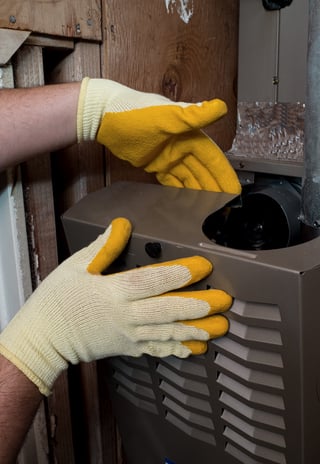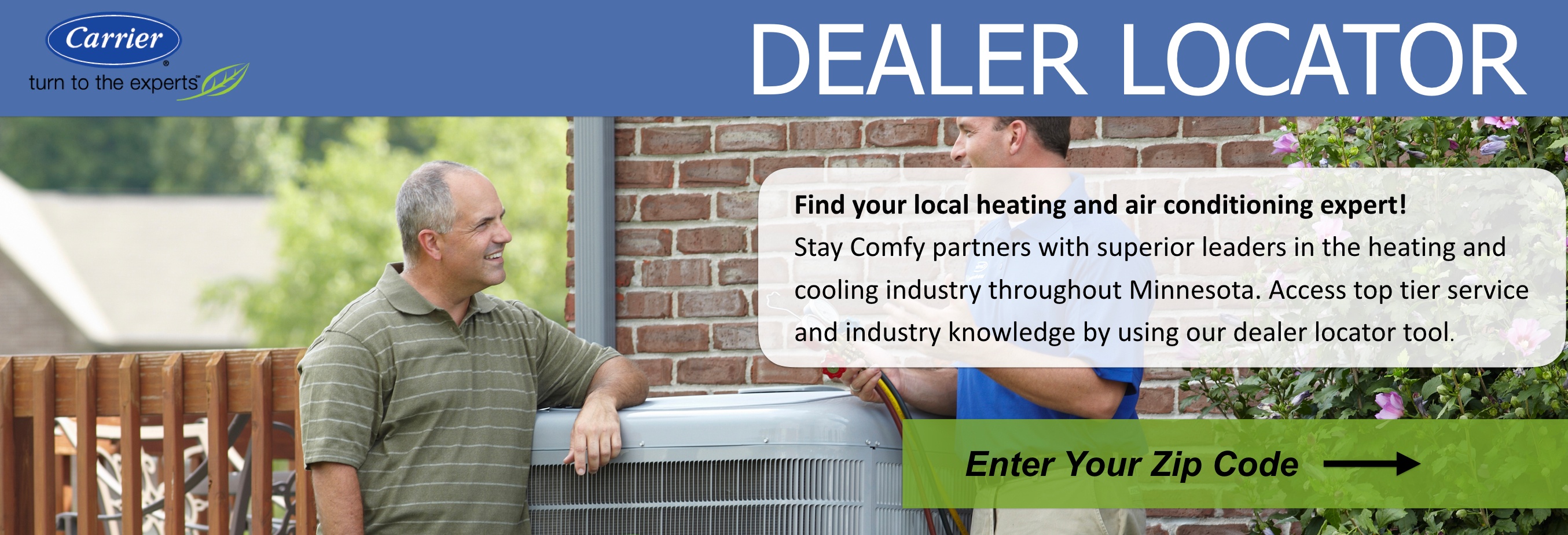
In the winter, nothing is worse than a cold house – especially if it’s because of an issue with your furnace. So, what should you do when you feel a chill and the temperature isn’t as high as the thermostat is set? Before you call a pro, here are 11 things to try when your furnace is not working.
1. Change The Filter
If your furnace is running but shutting off before the house warms up to the set temperature, you may have a dirty filter. The filter is the barrier that keeps the dirty air, allergens, dust, and pollen particles from entering your home. That’s why it’s so important to change your filter regularly. Once it gets clogged-up with all the stuff it’s protecting you from, the air won’t be able to flow as well through it and that may make your furnace dirtier and not function properly. Keep your filter clean or change it regularly to prevent furnace issues.
2. Check The Fuse Box/Circuit Breaker/Switches
It may seem obvious, but making sure there is actually power going to your furnace can often get overlooked. Technicians report going to more than one house where the only service needed for a broken furnace was actually turning it on! The same goes for checking the fuse box or circuit breaker. A flipped breaker or blown fuse can mean no power going to your furnace, which means no heat for you.
So, if you’re not hearing any sounds, like the furnace trying to start or the fan motor running, start by checking your fuse or circuit breaker. Sometimes it’s as easy as a simple reset. If that’s not the problem, check to see if someone accidentally (or kids playing) turned off the furnace at the furnace switch, which is usually found on the side of the unit.
3. Inspect The Thermostat
This is another obvious one, but making sure your thermostat is set to the ‘heat’ setting is another big red flag that could be ignored. If it’s set to ‘cool’ or ‘off,’ you won’t get heat in your home. If it is on ‘heat,’ but set at a lower temperature than the air in the room, it won’t turn on. Try a few degrees higher and see if that helps kick it into gear. If it’s a programmable thermostat, check to make sure you have it set for the correct times. And remember, many thermostats use batteries. If you don’t know the last time the battery was replaced, you may be in need of a new one.
It’s a good maintenance plan to replace thermostat batteries every few months, and especially at the beginning of the heating season. It’s simple, inexpensive, and can avoid an inconvenient shutdown.
4. Make Sure The Gas Is On/Pilot Light Is Lit
If you have ever turned off the gas valve, make sure it’s turned back on before you use your furnace or you’ll be getting no fuel going to your gas furnace – and you’ll need that in order for it to work. Older furnace models have a pilot light that also needs to be lit. Those models are usually more than 20 years old.
5. Clear Grilles And Vents
Are you hearing the air go on, but feeling no heat in some rooms of your home? That may mean an air register, grille, or vent is blocked in the room. Check to make sure registers are open and that furniture isn’t blocking the vents. Anything put in front of a register can restrict airflow and cause your furnace to overheat, work harder than it needs to, or just not have enough ‘oomph’ to get to where it needs to go.
6. Check For Blocked Ducts (Air Flow)
If you’ve checked your grilles and registers, but you’re still not getting heat to a few rooms of your home, it may mean you have blocked ducts or even a leaky duct that is letting the warm air escape before it reaches your room. Clear the ducts and make sure they are clean and sealed. Any obstructions like built-up dirt, dust, or even rodents can prevent the heat from getting to your rooms properly.
7. Make Sure Intake And Exhaust Vents Aren’t Blocked
Another airflow issue comes from the outside exhaust and intake being blocked. Sometimes leaves, debris, or even birds can get into your exhaust flue. You can clear it yourself if you are comfortable doing it, or hire a professional to do it for you.
8. Look For Corrosion and Dirt in the Furnace
If you feel comfortable doing it, turn off the power switch and remove the front panels of the furnace. Look for things that don’t belong - rusty components, corrosion, spider webs, insect remnants, etc. Lint and dirt can cause issues also. Compressed air or a vacuum may help to clean things up, but hire a pro to change any components that are corroded.
9. Clear Drain Lines
Both high-efficiency furnaces and boilers have drain lines to carry away the flue gas condensate. If the drain line is clogged with dirt, sediment, or mold, the furnace/boiler will stop working. Flush the drain lines if you suspect this could be the issue.
10. Reset the furnace.
Most modern furnaces with electronic ignition have a lockout mode if the ignition sequence fails. Given time, they usually reset on their own, but rather than wait, try turning off the furnace, wait a minute, then turn it back on. Lockouts can be caused by electrical brownouts or blackouts or by low gas pressure. If you’ve had any of those conditions, a reset may be all you need. Otherwise, if lockouts continue to occur, you’ll likely need to call in a professional.
11. Call For Maintenance
Last, but certainly not least, is to call for maintenance and service if your furnace stops working properly. With everything in life, once you start feeling uneasy doing something yourself, hire a pro to do it for you! By getting an HVAC technician who knows their stuff, it can bring you some peace of mind that you’re getting the job done right the first time.





